Do you have a question about the Siemens iQ300 KA90N Series and is the answer not in the manual?
| Type | Side-by-side |
|---|---|
| NoFrost | Yes |
| Color | Stainless steel |
| Climate Class | SN-T |
| Water Dispenser | Yes |
| Ice Maker | Yes |
| Dimensions (HxWxD) | 177 x 91 x 72 cm |
Read instructions carefully for safe setup, use, and maintenance.
Information on refrigerant R600a, risks of damage, ignition, and eye injury.
Warnings on electrical devices, steam, sharp objects, flammable gases, and proper usage.
Identifies at-risk individuals and outlines necessary supervision and instruction.
Check all parts for transport damage upon unpacking and contact retailer if defects are found.
Guidelines on environmentally responsible disposal of packaging and old appliances.
Ensure the floor can support the appliance weight and reinforce if necessary.
Maintain side clearances for full door opening and kitchen fitting compatibility.
Fit spacers to the rear for adequate ventilation.
Understand climate class and ensure unimpeded air circulation for efficient operation.
Detailed measurements and diagrams for appliance placement.
Information on door swing and clearance needed for full access.
Electrical connection requirements and safety precautions.
Instructions on how to ensure the appliance is perfectly level for proper function.
Instructions for adjusting the appliance's front feet to achieve level.
Steps to align appliance doors when the unit is level.
Procedures for unscrewing door handles or doors if the appliance is too large.
How to correct vertical alignment issues with the fridge compartment door.
Identification of internal components and features of the fridge and freezer compartments.
Description of specific parts like shelves, drawers, and pockets.
Explanation of buttons for temperature, functions, and alarms.
How to interpret symbols and temperatures on the fridge and freezer display panels.
Steps for initial power-up, including factory settings and alarm behavior.
How to adjust temperatures for the fridge and freezer compartments.
Using the rapid cooling feature for drinks or large food loads.
Activating rapid freezing to preserve food quality and nutritional value.
How to lock controls to prevent accidental changes.
Understanding door and temperature alarms and how to respond.
Guidelines for storing frozen food, making ice, and freezing.
Recommendations for storing fresh food and understanding temperature zones.
How the appliance enters a low-power display mode.
Information on the appliance's total storage volume.
Information on the maximum amount of food that can be frozen in 24 hours.
Tips for purchasing, arranging, and storing frozen foods.
Guidelines on preparing and freezing fresh food to maintain quality.
Options for thawing frozen food at ambient temperature, in fridge, or microwave.
Instructions for removing and refitting glass shelves, door pockets, ice trays, and drawers.
Procedures for turning off the appliance, including temporary shutdown.
Steps for long-term storage, including cleaning and leaving doors open.
Information on condensation and frost formation in the fridge compartment.
Note that the NoFrost system eliminates the need for freezer defrosting.
Detailed steps for cleaning the interior and exterior safely.
How to identify and eliminate unpleasant odours within the appliance.
Tips and best practices for reducing the appliance's energy consumption.
Explanation of normal operational sounds and how to prevent unusual noises.
A guide to common problems and their solutions before contacting service.
Information on how to contact customer support and book repairs.
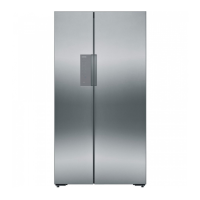
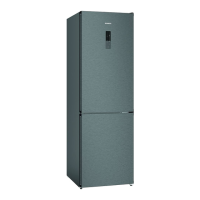
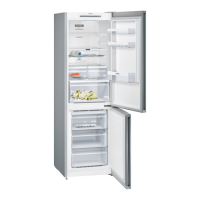
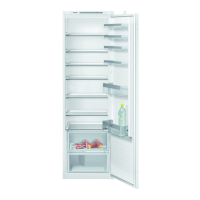




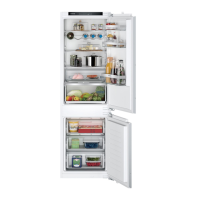

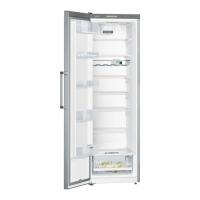

